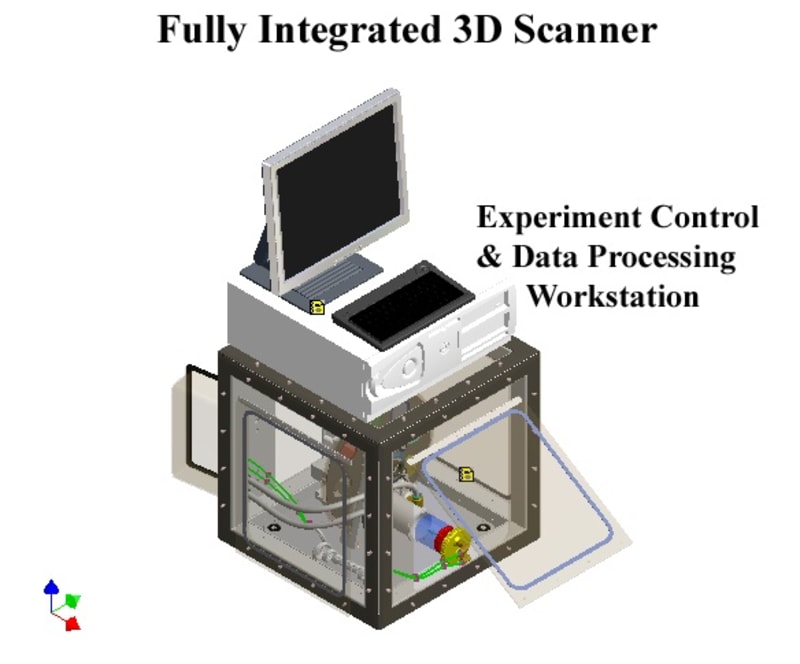An apparatus and method for capturing 3 dimensional tomographically registered full spectrum computer digitized images of internal structures of specimens is described. Instrument Collected 2D data slices are later processed to create extremely intricate 3D models in full color. They are naturally registered and aligned datasets with detail beyond any known invention that can reveal structure potentially to the 100 nanometer realm.
By use of specialized mounting systems and methods, dried or frozen specimens are cast into rigid optical or opaque mounting compounds in specialized lapidary mounts. The lapidary system uses a lapping wheel platen that is a spinning clear surface where the abrading or cutting surface is in direct contact with an imaging plane. Removing layers of the specimen using lapidary or direct abrasion or cutting methods exposes new structures on a plane that is made coincident to the optical imaging plane. An image-recording device or photographic camera is mounted to record the images as the layers are removed. Capturing each exposed layer image offers the ability to later recombine these images either through standard cinema or digital imaging methods into 3 dimensional representations of the artifact, creature, biologic or material sample. The entire sample is sacrificed with this scanning method.
The mounted specimen is held in a rigid position in regard to 2 axes and is moved or is allowed to move toward the optical plane as each layer is exposed so the new exposed layer is always in contact with the imaging plane. An alternative approach is to hold the specimen rigid.
The imaging plane is also the lapidary wheel platen and would be made of hardened tempered opaque material and would have surface qualities that directly abrade the sample and can be used with an abrasive lubrication cutting fluid. The imaging window would also abrade very slightly over time but at a rate much less that the abrasion rate of the sample. The window would be simple and cheap to replace. Surface characteristics of the lapidary wheel platen windows are engineered with both optical and abrasive qualities enhanced.
The lapping compound would be also chosen for its optical qualities so as not to interfere with the imaging of each cutting plane. The lapping compound would use engineered abrasives that would be the least damaging to the lapidary wheel, which also must allow light to transmit through. Abrasion properties of the compound are chosen properly so the wheel would remain in a constant state of high polish throughout its service life.
Since the image plane is always registered in the same position, then the imaging system can, if desired, use very inexpensive contact imaging methods that require no lenses such that are used in flatbed document scanners or contact photographic emulsion printing.
Video and other motion picture imaging systems can be used that would allow the continuous recording of the entire process where virtually no information is lost. Digital compression of information can reduce datasets by orders of magnitude.
Like this entry?
-
About the Entrant
- Name:Robert Harker
- Type of entry:individual
- Hardware used for this entry:Dell PrecisionSoftware used for this entry:Autodesk Inventor
- Patent status:pending








